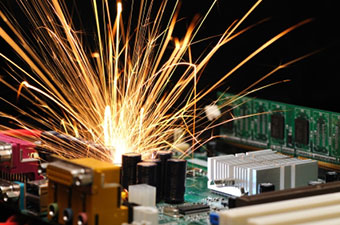
Failure-Mode Models for MLCC and Tantalum Capacitors
Prolonged exposure to voltage transients can result in a gradual change the electrical properties of a capacitor. In many cases, these changes are not sufficient to have a measurable effect on the normal operation of a circuit, but they can significantly affect the way that a circuit reacts to unintentional excitations. A circuit's response to radiated electromagnetic fields, power line transients, over-voltage conditions or electrostatic discharge can be very different (and difficult to predict) after one or more of its capacitors has been degraded. Electromagnetic compatibility (EMC) testing is generally done on new products that are in good working order. Anticipating and modeling system EMC failures that might occur in the field requires an understanding of the various failure modes of the system components. This is particularly true when these component failures go undetected during normal system operation. The goal of this project is to evaluate the gradual deterioration of MLCC and tantalum capacitors that can occur due to exposure to medium-to-high voltage transients; and develop models that represent the electrical behavior of these components. These models will be applied to system-level EMC models in order to better anticipate failures that can possibly occur in the field. Publications
|
